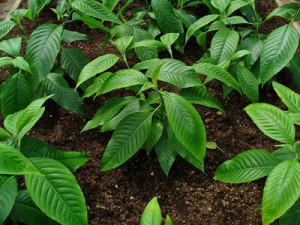 Lung Cancer is the most common cause of death in the modern world. Ayurveda has over time and again proved to help in cure of lung cancer. Ayurveda makes use of herbs existing in the nature to formulate herbal remedies. The herbal medicines help to improve immunity and provide strength in a natural way. Ayurvedic medicines for lung cancer help relieve pain and anxiety.
Lung Cancer is the most common cause of death in the modern world. Ayurveda has over time and again proved to help in cure of lung cancer. Ayurveda makes use of herbs existing in the nature to formulate herbal remedies. The herbal medicines help to improve immunity and provide strength in a natural way. Ayurvedic medicines for lung cancer help relieve pain and anxiety.
Vasaka and Lung Cancer
Vasaka is a popular ayurvedic herb that is called Malabar Nut in English. The herb has been in use for many years in the field of herbal medicine. It is also commonly known as Adhatoda Vasica. This herb in Ayurveda helps to stop the abnormal growth of cells and help regenerate the normal healthy body cells. It works to relieve patients from unreasonable suffering.
About Vasaka
The herb reaches as high as 1300 meters in height and is grown on different types of soil and habitats. The Malabur nut tree has leathery leaves with dense flowers. The plant including its roots, leaves, flowers and bark are used in the herbal preparations. This evergreen plant is used for treatment of lung cancer.
Usage
For treatment of lung cancer in ayurveda, the leaves are used. The leaf juice is mixed with goat’s milk and the patient drinks about 2 tsp every morning. Following this for 40 days helps in cure of lung cancer. In addition to treating lung cancer, it is also used to loosen chest congestion, open breathing tubes and helps in respiratory comfort. It supports the immune system and helps support the bronchial function. The leaves are rich in Vitamin C and are well known for respiratory tract. The plant acts as an antibacterial herb and help diseases like throat diseases, tuberculosis, and more.
Precautions
You should avoid using this herb during pregnancy and breast feeding. Also, heavy doses may cause diarrhea and vomiting.
The information in this blog is for educational purposes only and you should consult your health practitioner before starting any medicine or ayurvedic herb.
What are your views about treatment of lung cancer in ayurveda? Share your thoughts with us in the comments.
| Image courtesy of H. Zell (Own work) [GFDL or CC BY-SA 3.0], via Wikimedia Commons |
